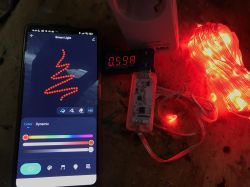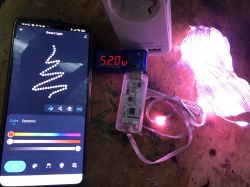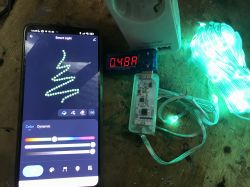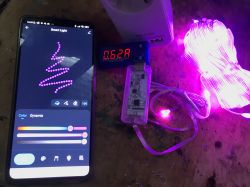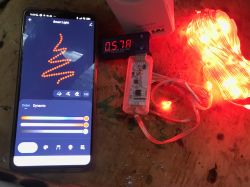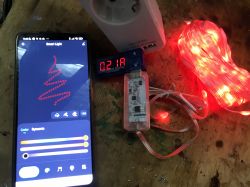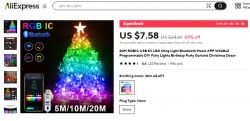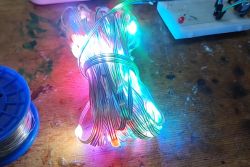 .
.
What lights for your Christmas tree? Preferably the WS2812 - the WS2812 LED strip is distinguished from other strips by the fact that each LED can have a different colour at any given time. With classic PWM-controlled LED strips, all LEDs must necessarily be one colour, so the WS2812 is a big step forward if you want to display a greater variety of effects and animation. Here I will present such a ready-made kit, 10 metres of WS2812 lights powered from 5V together with a controller. Just right for Christmas tree lights. All for £80:
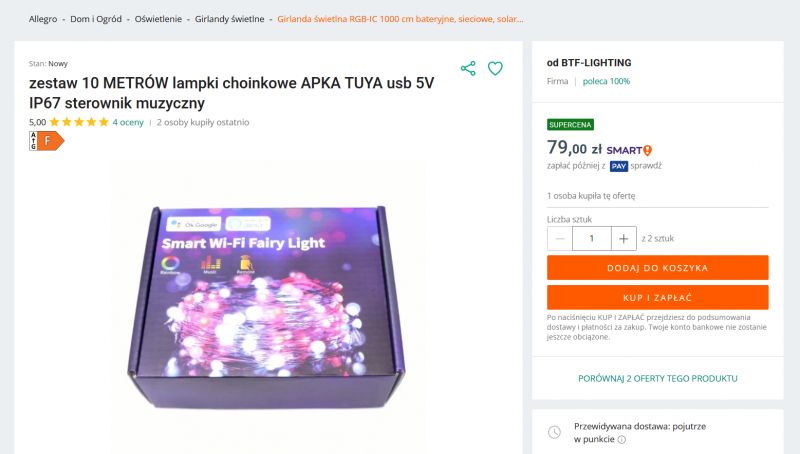 .
.
To quote the description. 100 LEDs and even a remote control is included.
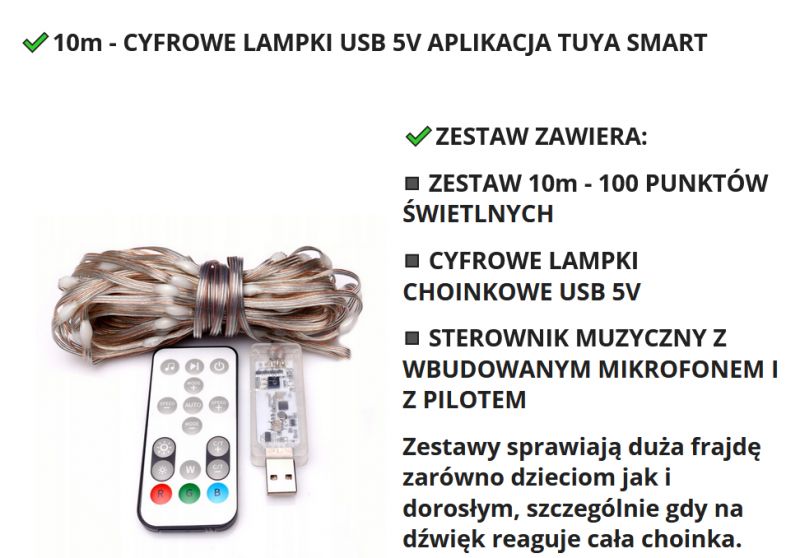 .
.
CR2025 battery for the remote control also included. I wonder if this longevity is true?
 .
.
Specifications:
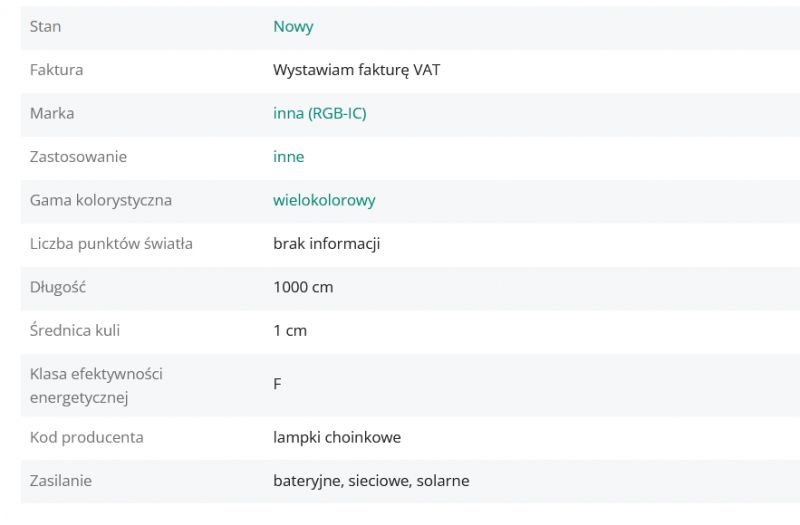 .
.
But where did the solar power come from? That's some mistake.
Let's see what we get in practice:
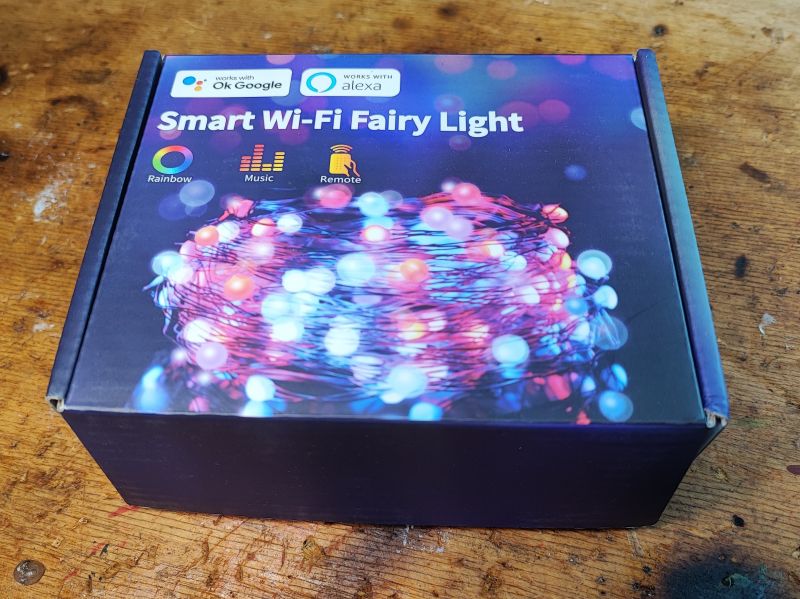
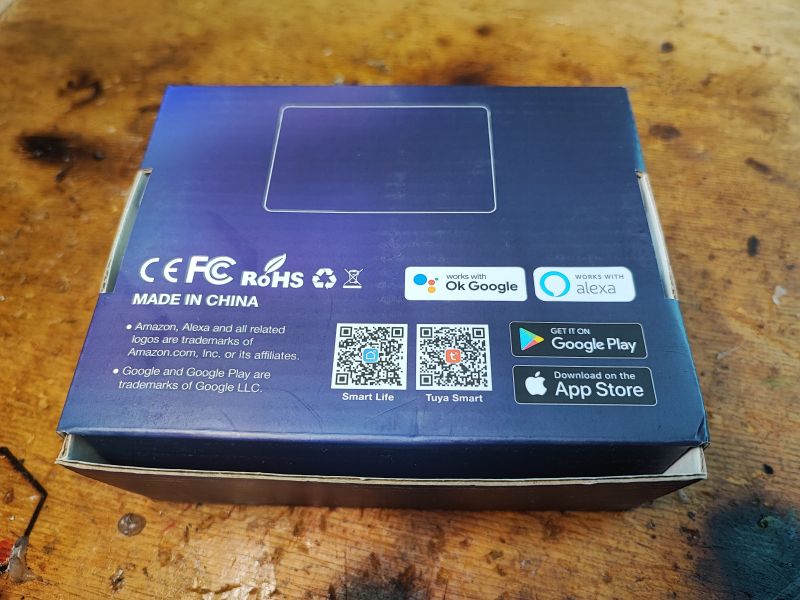
 .
.
Kit contents. The power supply is not there:

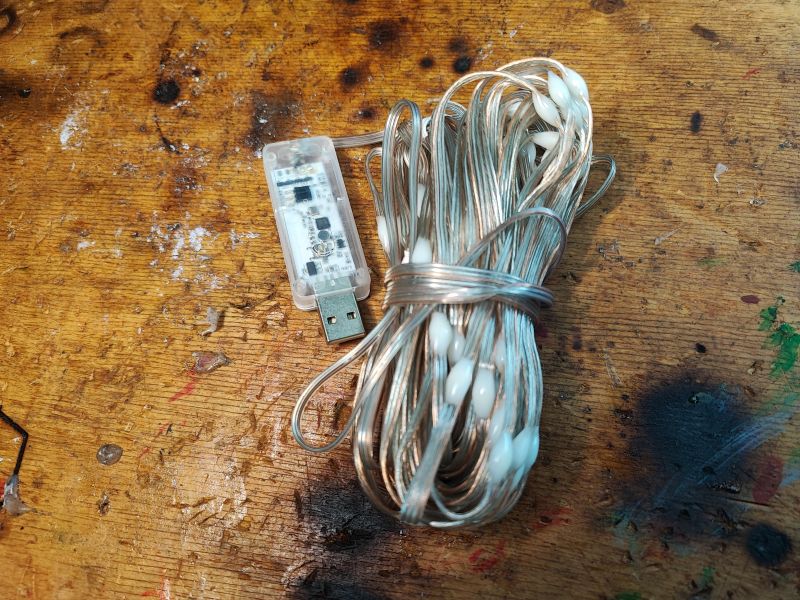 .
.
Pairing instructions - the Bluetooth mentioned suggests to us that there is no ESP8266 inside, but a BK7231.
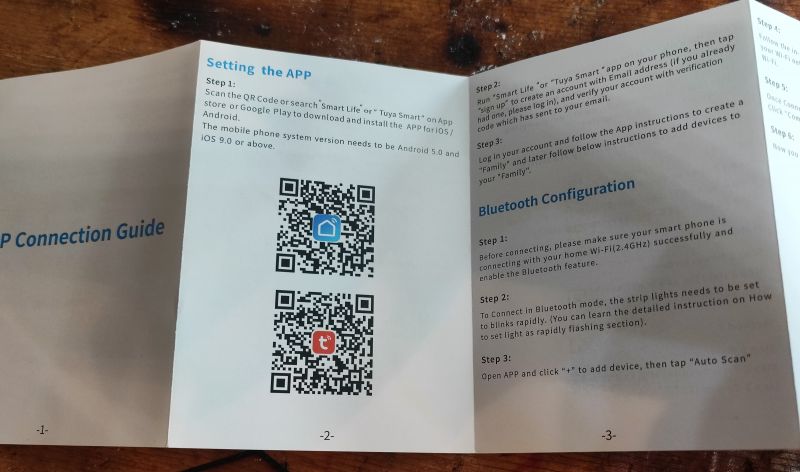
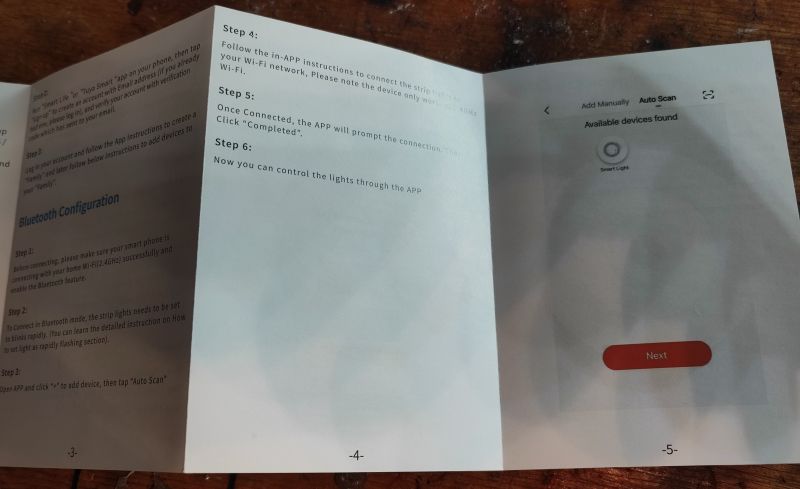
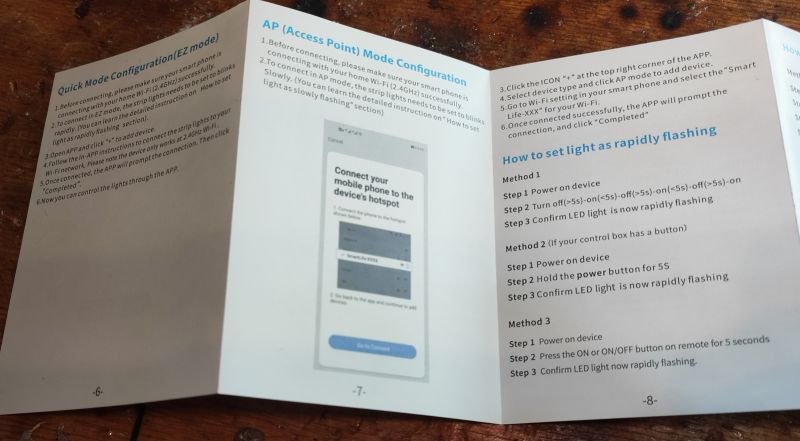
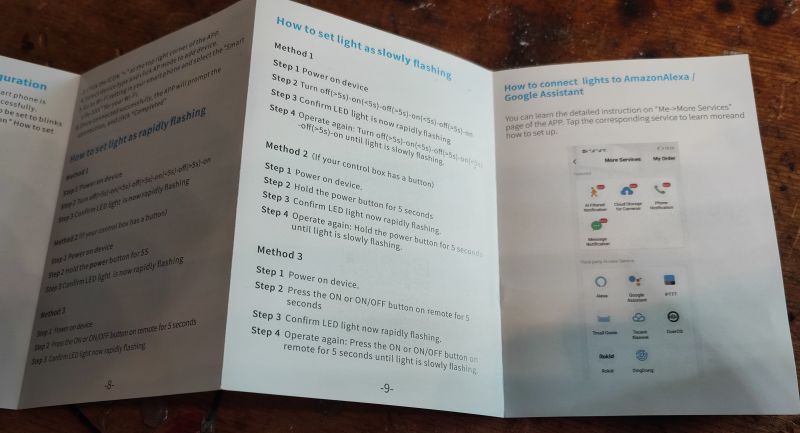
 .
.
As the product is quite unusual, I decided to test it both with the manufacturer's application and separately with OpenBeken (after changing the firmware)
Test with Tuya application .
We pair according to the instructions. In my case, the app immediately sensed the new device:
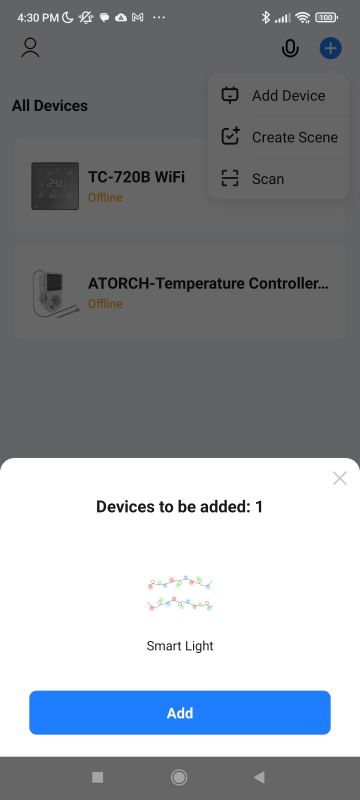 .
.
After entering the WiFi name and password, everything went smoothly:
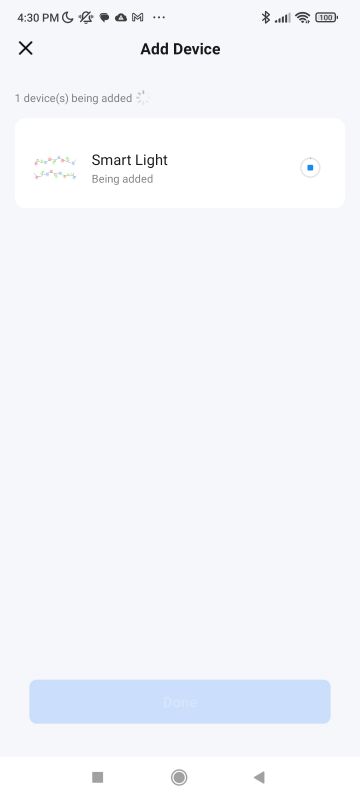
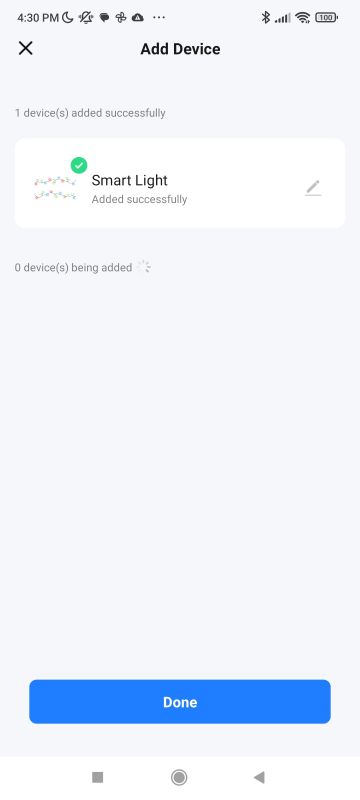 .
.
In the app, we are greeted by a panel like this:
 .
.
One colour can be set globally, but there is more...
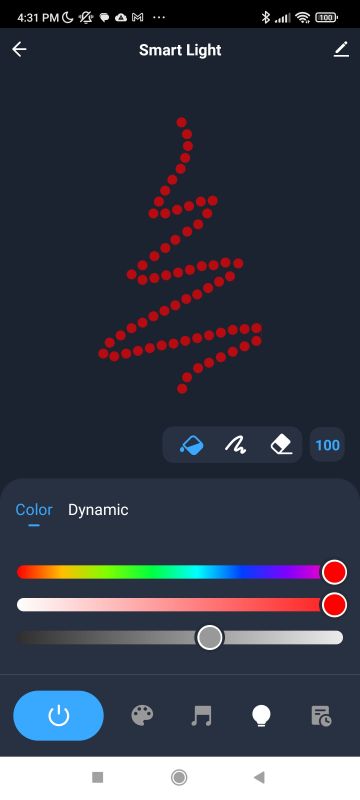
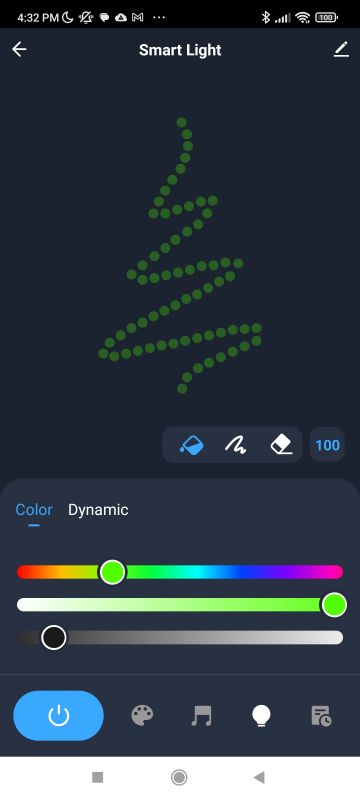 .
.
You can also manually set the colour of the selected LEDs:
 .
.
You can also set the number of LEDs in the strip, i.e. artificially lengthen or shorten the strip. Not bad!
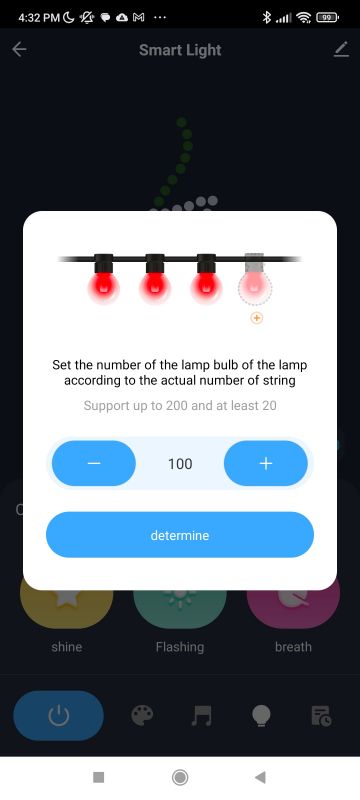 .
.
The 'Dynamic' tab, on the other hand, has animations:
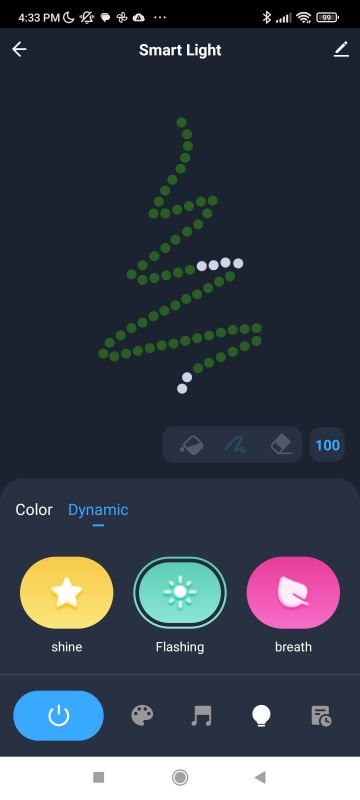
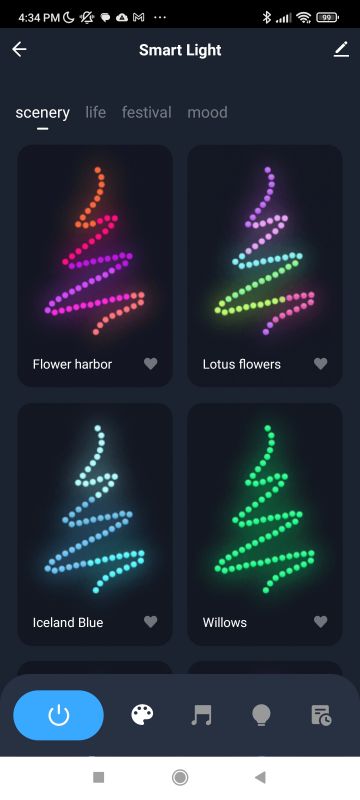

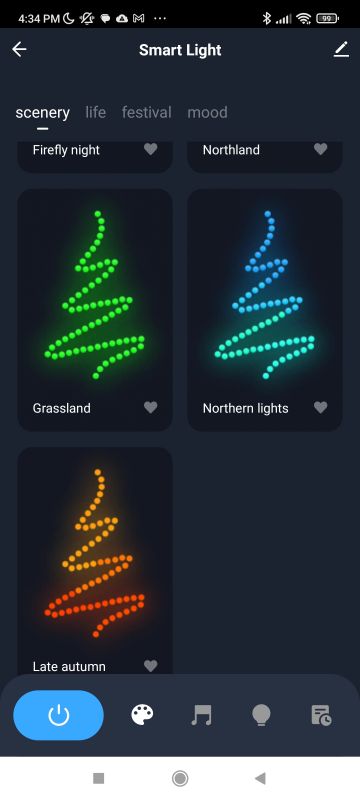 .
.
The choice is wide.
Here we also have a third control option - according to the rhythm of the music. Here, too, there are many modes to choose from, I haven't even tested them all. Certainly, the device can take music both from the microphone and from the phone (as a BT speaker, without playing it, of course):
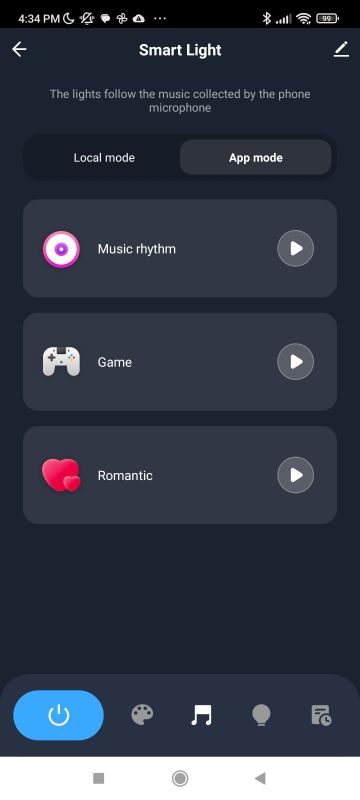
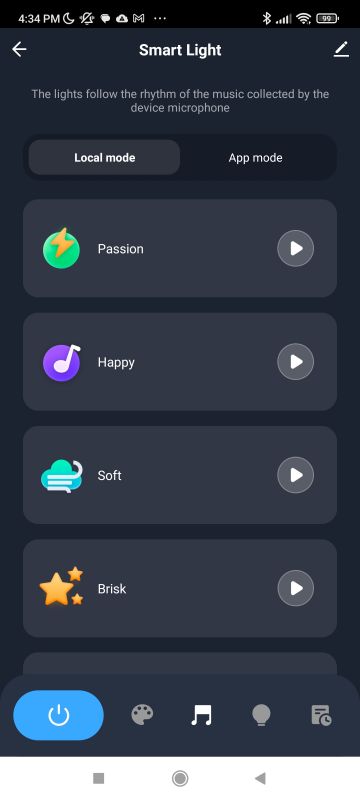 .
.
A schedule and countdown are also available:
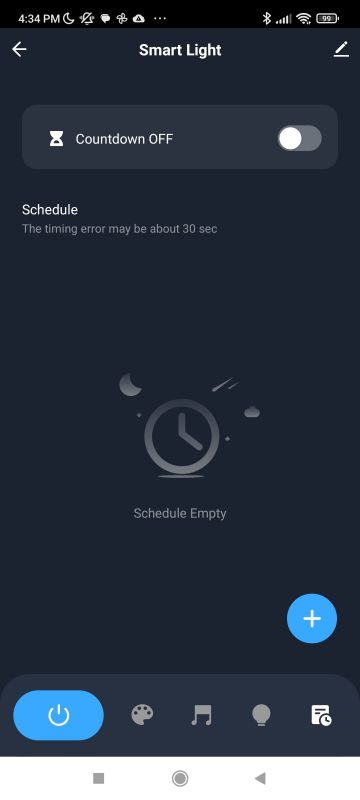
 .
.
Music modes also allow you to set their sensitivity:
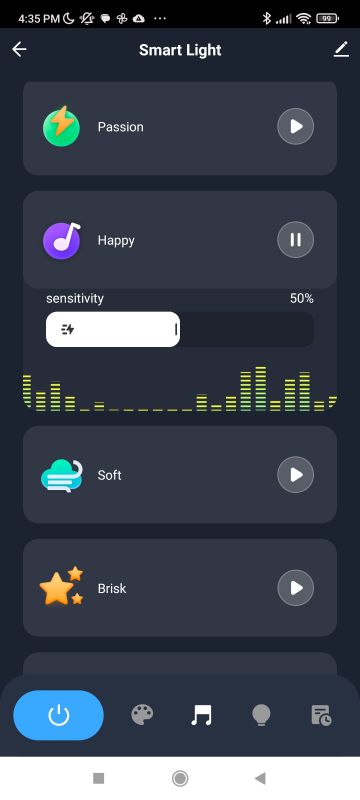
 .
.
Example animation:
Firmware change .
The product can also be freed from the cloud and connected to Home Assistant. OpenBeken is uploaded:
https://github.com/openshwprojects/OpenBK7231T_App
Upload tool and instructions for flashing via UART:
https://github.com/openshwprojects/BK7231GUIFlashTool
To do this, we open the case - it's snap-on:
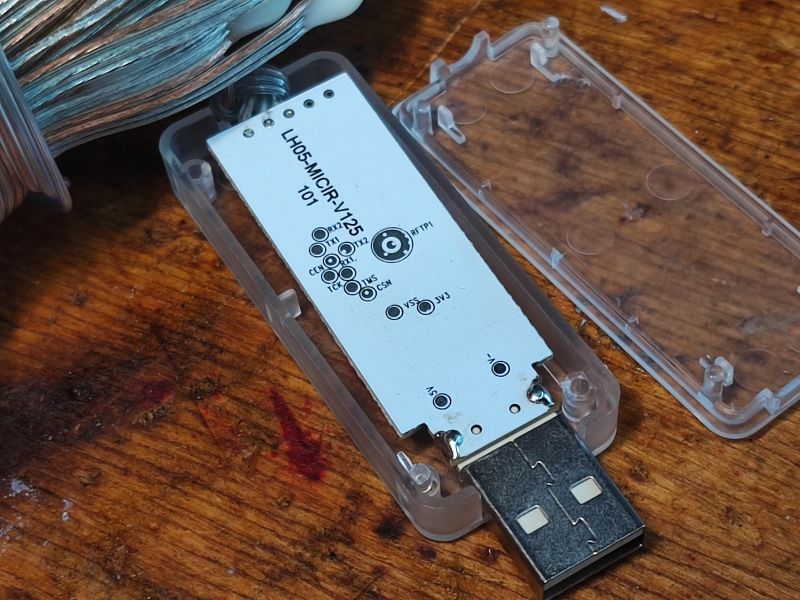 .
.
PCB designation: LH05-MICIR-V125
By the way we can see the electronics inside, here we have the IR receiver, the button (from pairing) and the microphone and the 3.3V LDO regulator powering the BK7231N.
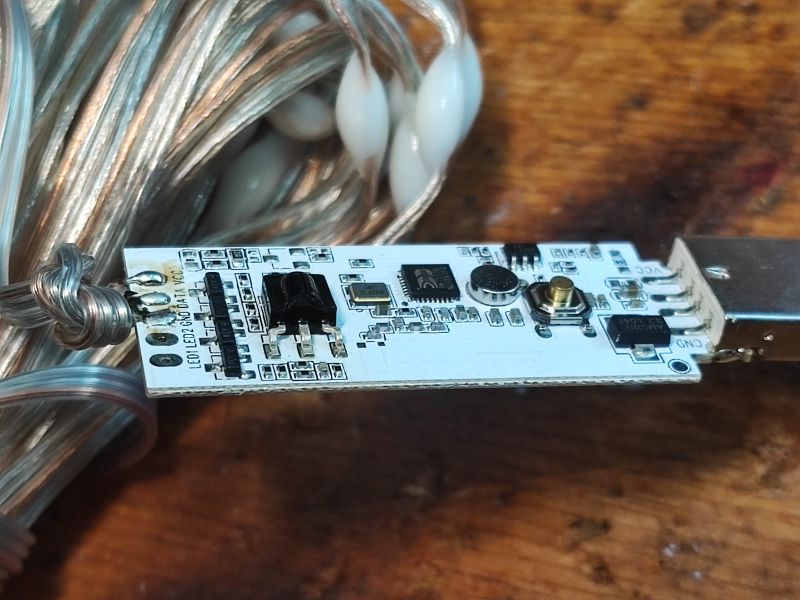
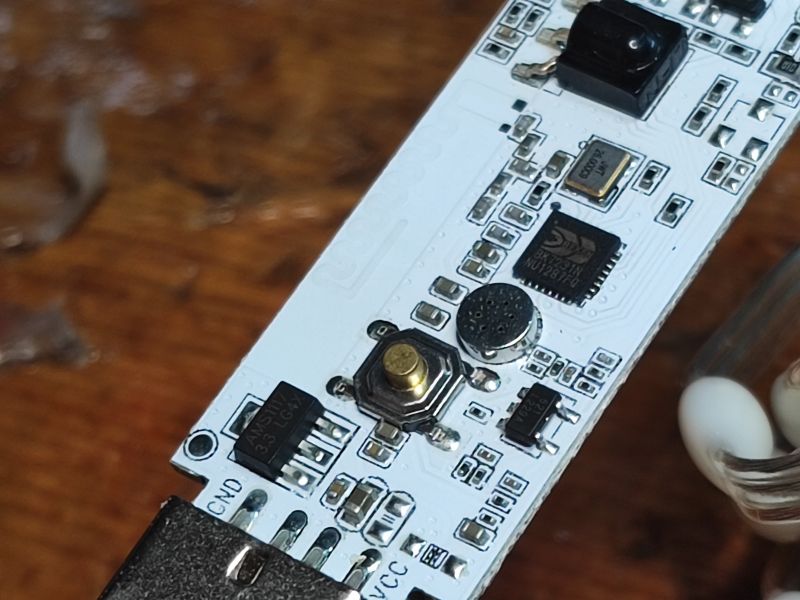
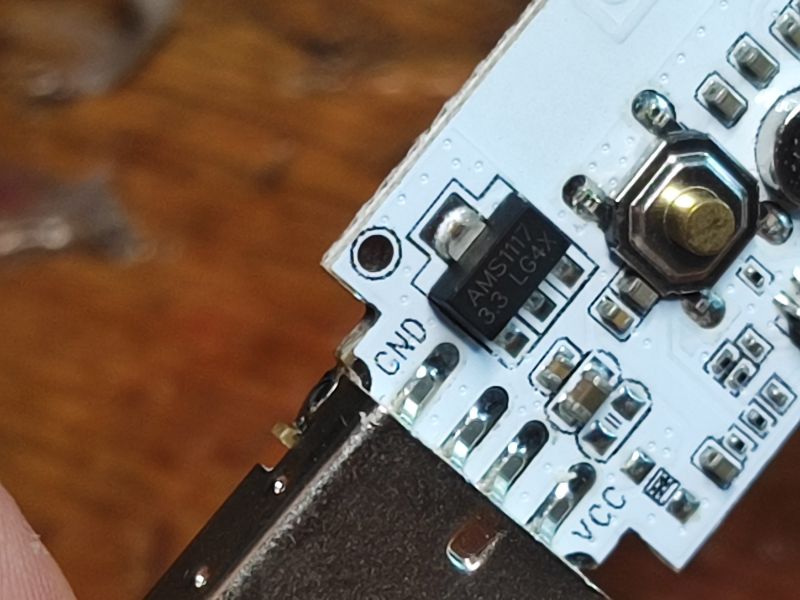

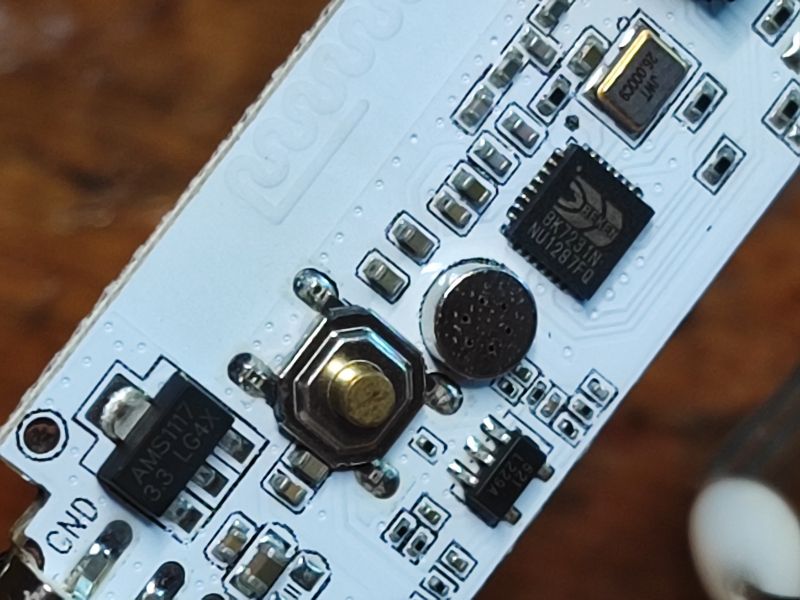
 .
.
You will need 4 cables for programming - 3.3V, GND, RX and TX. The pads are signed:
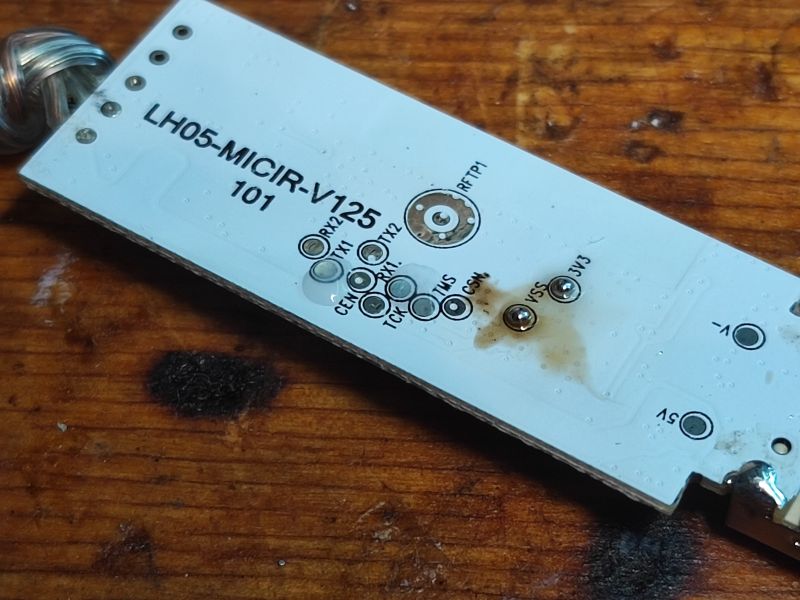 .
.
Here is my whole layout for programming, I have my own 3.3V LDO on the contact board, although for this particular device you could just as well use the LDO that is on the board there. It's just that sometimes I program separate modules such as the CB2S or WB2S and in their case there is no LDO already on the PCB so I have to have my own.
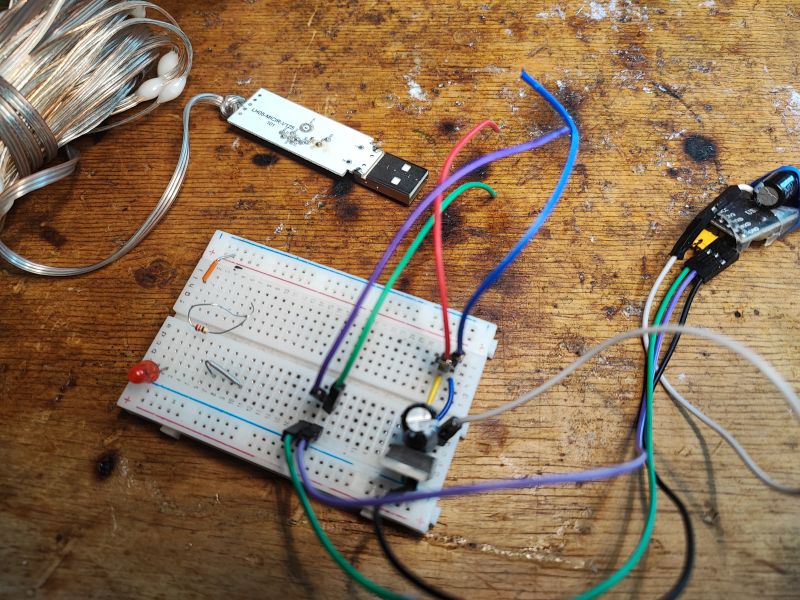 .
.
Soldered wires - you can see exactly which pad is which:
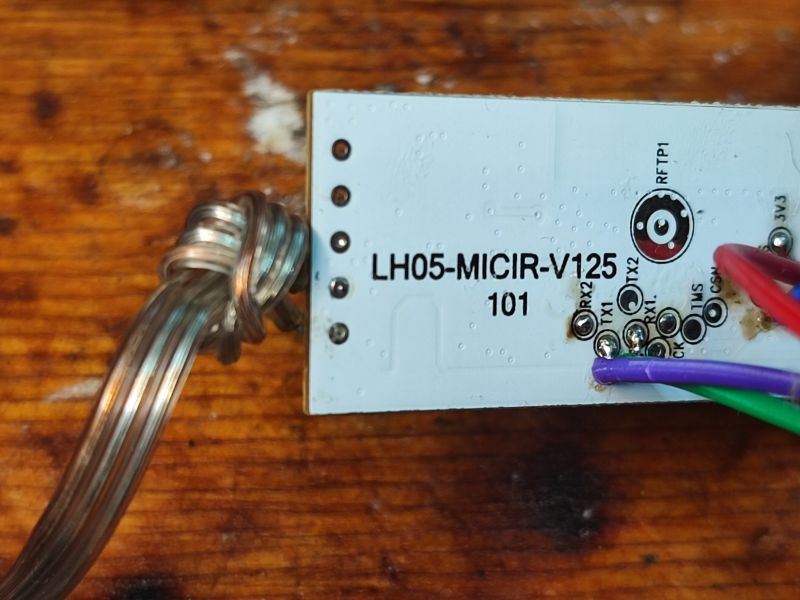

BK7231 Easy GUI Flasher correctly detects GPIO roles:
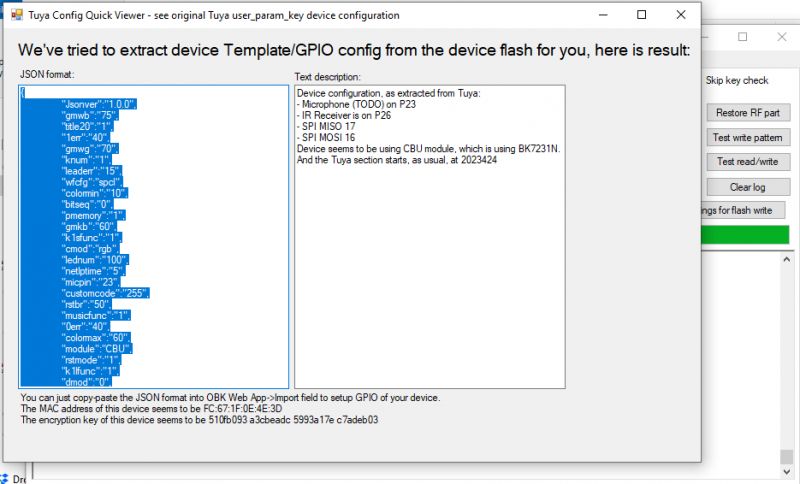 .
.
Once the IR controller is running and the IRRecv pin is set, codes can also be captured from the remote control:
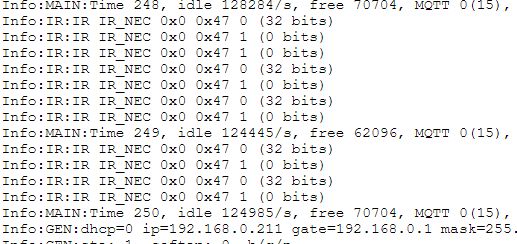 .
.
Further configuration should follow the following themes:
Animations OpenBeken WS2812B - new HTTP panel integration, PixelAnim driver .
[Youtube] BK7231 LED strip programming and modification - adding IR receiver .
Then you can also use the DDP to send colour information:
DDP protocol - way to real-time LED animations over WiFi - OBK, xLights, configuration .
The operation itself after the firmware change is largely up to us, e.g. we decide how we map IR codes to commands.
You can also take a look here:
https://github.com/openshwprojects/OpenBK7231T_App/blob/main/docs/autoexecExamples.md
Summary .
A very interesting product. Works pretty well both with the manufacturer's app and after a software change. The control offered over the LEDs is really large and also the choice of animations is wide. The animations can also be played to the rhythm of music, which is also configurable and available in many modes, which I would not be able to show all of here, because who would want to watch a dozen videos? And with the inclusion of sound sensitivity changes there would be even more....
The most important thing for me was to change the firmware and this was also done - along with the remote control operation. The final configuration is up to you, you can customise everything.
Do you use this type of kit, or maybe you have done some projects based on WS2812 yourself? .
Cool? Ranking DIY Helpful post? Buy me a coffee.








